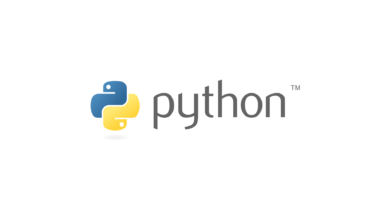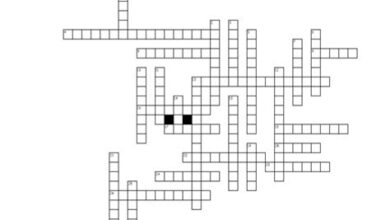CUET UG 2023 (The Common University Entrance Test): Application Form (Extended), Exam Date, Pattern & Syllabus

[ad_1]

The Common University Entrance Test (CUET), formerly known as the Central Universities Common Entrance Test (CUCET), is an all-India examination administered by the National Testing Agency to candidates seeking admission to 45 Central Universities of India’s undergraduate, integrated, postgraduate, diploma, certification, and research programmes. Many other State Universities and Reputable Universities in India also accept it.
The deadline to submit the CUET application form 2023 has been extended by the National Testing Agency (NTA) until March 30. On February 9, 2023, NTA began the CUET 2023 registration procedure online. Before the deadline, applicants can complete and submit the CUET 2023 application form. On April 30, the NTA will release the advanced city intimation slip, and in the second week of May, it will release the CUET admit card. The Common University Entrance Test will be given by the National Testing Agency from May 21 to May 31. The dates for CUET UG are June 1 through June 7. For admission to various UG and integrated PG programmes at the 147 participating universities, the CUET 2023 will be held.
Exam CUET 2023 will be administered online as a computer-based test. The CUET 2023 question paper will have four sections and be given in thirteen different languages. You can download the CUET syllabus at cuet.samarth.ac.in. NTA will release the CUET 2023 admit card a few days before the exam. By entering their application number and date of birth on the official website, candidates can download their CUET 2023 admit card.
Eligibility
The class 12 or equivalent exam must have been passed or taken in 2023 for candidates to be eligible for the CUET exam, according to the CUET UG eligibility requirements. The CUET exam has no upper age limit. Candidates must confirm any age restrictions with the specific university in question by visiting its website. Each course’s CUET eligibility requirements might be different.
| Programmes | Eligibility |
| BSc | Must either be taking or have already passed the 10 +2 exam in 2023, in Physics, Chemistry, Mathematics or Biology. |
| BA, BA Hons | Must have passed 10 + 2 or appearing in 2023 |
| BVoc | Must have passed 10 +2 or appearing in 2023 |
| BVoc | Must have passed 10 +2 or appearing in 2023 |
| Linguistics Programmes | Must either be taking or have already passed the 10 +2 exam in 2023. |
| BBA | Must either be taking or have already passed the 10 +2 exam in 2023.In some colleges, Senior Secondary School Certificate or an equivalent exam with a minimum of 50% on the best five papers taken together. |
| Integrated M.A. HistoryIntegrated M.A. Political ScienceIntegrated M.A. Sociology | Pass in +2 with a minimum of 50% of marks |
| Integrated M.Sc. Applied GeologyIntegrated M.Sc. ChemistryIntegrated M.Sc. Physics | Pass the +2 with a 50% grade point average and have studied mathematics, physics, and chemistry |
| Integrated M.Sc. MathematicsIntegrated M.Sc. Computer ScienceIntegrated M.Sc. Statistics | Pass the +2 with a minimum of 50% in the subjects of Mathematics, Physics, and Chemistry. |
| Integrated M.A. in Social & Economic Administration and Law | Candidates must have passed the I Higher Secondary, Intermediate, or Senior Secondary School Certificate Exam, administered by the Center or State Government Board. OR ii)A recognized university’s pre-university or pre-degree examination OR iii)The French Baccalaureate or any other degree equivalent to those listed above that has been approved by the university’s Academic Council. Additionally, they should have obtained a qualifying exam score of at least 50%. |
Syllabus
- Reading comprehension: Type of passages: (i) Factual, (ii) narrative, (iii) literary
- Verbal ability
- Rearranging the parts
- Choosing the correct word
- Synonyms and antonyms
- Vocabulary
- Languages (IA)-Hindi
- Languages (IA)-Assamese
- Languages (IA)-Bengali
- Languages (IA)-Gujarati
- Languages (IA)-Kannada
- Languages (IA)-Malayalam
- Languages (IA)-Marathi
- Languages (IA)-Odia
- Languages (IA)-Punjabi
- Languages (IA)-Tamil
- Languages (IA)-Telugu
- Languages (IA)-Urdu
- Languages (IB)-Arabic
- Languages (IB)-Bodo
- Languages (IB)-Chinese
- Languages (IB)-Dogri
- Languages (IB)-French
- Languages (IB)-German
- Languages (IB)-Italian
- Languages (IB)-Japanese
- Languages (IB)-Kashmiri
- Languages (IB)-Konkani
- Languages (IB)-Maithili
- Languages (IB)-Manipuri
- Languages (IB)-Nepali
- Languages (IB)-Persian
- Languages (IB)-Russian
- Languages (IB)-Santali
- Languages (IB)-SindhI
- Languages (IB)-Spanish
- Languages (IB)-Tibetan
- Languages (IB)-Sanskrit
- Accountancy
- Accountancy/ book keeping (accounting for not-for-profit organisations and partnership firms)
- Accountancy/ book keeping (company accounts and financial statement analysis)
- Accountancy/ book keeping (computerised accounting system)
- Agriculture
- Anthropology
- Fine art (painting, sculpture, graphics and commercial arts)
- Biology/ biological studies/ biotechnology/ biochemistry
- Chemistry
- Computer Science
- Computer science/ informatics practices (section-A)
- Computer science/ informatics practices (section-B1-computer science)
- Computer science/ informatics practices (section-B2-informatics practices)
- Economics/ business economics
- Engineering graphics
- Entrepreneurship
- Environmental studies
- Business
- Business studies (principles and functions of management)
- Business studies (business finance and marketing)
- Geography
- Geography/ geology (fundamentals of human geography)
- Geography/ geology (India: People and economy)
- History
- Home science
- Knowledge tradition-practices of India
- Legal studies
- Mass media and communication
- Mathematics
- Mathematics/ applied mathematics (section-A)
- Mathematics/ applied mathematics (section-B1-mathematics)
- Mathematics/ applied mathematics (section-B2-applied mathematics)
- Performing arts
- Performing arts (dance)
- Performing arts (drama theatre)
- Performing arts (music-Hindustani melodic)
- Performing arts (music-Hindustani vocal)+
- Performing arts (music-carnatic music-melodic instrumental)
- Performing arts (music-carnatic music-vocal)
- Performing arts (music-Rabindra Sangeet)
- Performing arts (music-percussion)
- Physical education/ National Cadet Corps (NCC)/ yoga
- Physics
- Political science
- Psychology
- Sociology
- Sanskrit
- Teaching aptitude
- General test
Details of the CUET 2023 Exam
- There will be three time slots available for the CUET exam: morning, afternoon, and evening.
- The CUET paper will consist of four sections and be MCQ-based.
- The NCERT syllabus is the basis for the CUET Syllabus 2023. Sections IA and IB, on the other hand, are language-based and evaluate a student’s vocabulary, aptitude, and reading abilities.
- To understand the format and level of difficulty of the CUET exam, candidates must practise with the study material.
- The CUET 2023 Cut off will be determined independently by each participating institute. The Cut off-score varies for various courses and categories.
- Based on the results of the CUET 2023, the participating universities will create merit lists for each program that is being provided.
Online application method
Payment Options: Paytm, BHIM, Net Banking, Credit Card, Debit Card
On February 9, NTA made the CUET application form 2023 available online. To fill out the application, candidates can go to the cuet.samarth.ac.in website. The NTA will also offer a window for applicants to make minor changes to their applications.
How to Complete a CUET Application Form for 2023
- Step 1 – Go to cuet.samarth.ac.in, the official website.
- Step 2: Select the “Apply Online” tab from the homepage.
- Step 3: Enter the information requested, including the name, email address, phone number, date of birth, and confirmation code that appears on the screen.
- Step 4 – An application username and password will be generated following registration.
Important dates of the exam
| 09 Feb 2023 – 30 Mar 2023: | Application | Mode: Online Ongoing |
| 01 Apr, 2023 – 03 Apr, 2023: | Application Correction | Mode: Online |
| 30 Apr 2023 | Advance city intimation slip – Start Date | Mode: Online. |
| 14 May 2023 (Tentative) | Admit Card | Mode: Online |
| 21 May 2023 – 31 May 2023 | Exam | Mode: Online |
| 01 Jun 2023 – 07 Jun 2023 | Exam – Reserve dates | Mode: Online |
| 16 Jun 2023 (Tentative) | Result | Mode: Online |
Exam Pattern
| SectionSubjects/Tests | Questions to evaluate | Type | Time duration |
| IA Languages: 13 Languages |
40 questions to be attempted out of 50 in each language | Reading Comprehension (based on various passage types, including literary, narrative, and factual passages) (Literary Aptitude and Vocabulary) | 45 Minutes for each language |
| IB – Languages20 languages (languages to be attempted are other than the ones in IA) | 40 questions to be attempted out of 50 in each language | Reading Comprehension (based on various passage types, including literary, narrative, and factual passages) (Literary Aptitude and Vocabulary) | 45 Minutes for each language |
| Section II – DomainThere are 27 domain-specific subjects, but only up to six (06) of them can be chosen. | 40 Questions to be attempted out of 50 | MCQs. Based on the NCERT syllabus | 45 minutes for each subject |
| Section III – General TestAccording to the requirements of the particular university, where admission is based on a general test. | 60 Questions to be attempted out of 75 | MCQ-Based Tests.General knowledge, current events, general mental ability, numerical ability, quantitative reasoning (simple application of the fundamental mathematical concepts taught through eighth grades, such as arithmetic, algebraic geometry, and measurement), Analytical and Logical Thinking | 60 Minutes |
Candidates must select no more than three languages from Sections IA and 1B combined. (One of the selected languages must be used in place of the sixth domain-specific subject.)
The maximum number of subjects a candidate may select from the 27 subjects in section II is 6.
The General Test is contained in Section III of the CUET.
Answer Key
The provisional CUET answer key 2023 will be made available online by NTA. Candidates can check the correct answer to each question on the test and their estimated scores. Candidates have the allotted time to object if their response is incorrect. If it is, NTA will publish the complete answer key.
- Visit cuet.samarth.ac.in, the official website.
- The CUET answer key must be chosen by candidates in the homepage section.
- Use your birthdate and application ID to log in. The screens will display the solution key.
- Download and review the CUET provisional answer key’s solutions.
- Select “Login” from the tabs. The outcome will show up on the screen.
- Download the scorecard and print it several times.
All of the participating universities will begin the admissions process after the results are announced. The universities will first send out applications to potential candidates before announcing cutoffs based on CUET results. Candidates who pass the cut-off will be invited to the counselling round, where all the paperwork will be checked and the admission fee must be paid to secure a candidate’s seat.
FAQs
What is the English syllabus for the CUET 2023 undergraduate entrance test?
The CUET English syllabus for 2023 will include multiple-choice (MCQ) questions from reading comprehension based on various passage types, including factual, literary, and narrative texts, as well as questions about literary aptitude and vocabulary.
What is the BA program’s CUET syllabus for 2023?
There is no set CUET 2023 BA syllabus because it depends on the test domain that each candidate chooses. Some participating universities do not require the taking of domain exams for admission to BA programs.
Which institution falls under CUET the best?
The top Institutions are;
- Aligarh Muslim University.
- Assam University.
- Babasaheb Bhimrao Ambedkar University.
- Banaras Hindu University.
- Central Sanskrit University.
- The Central Tribal University Of Andhra Pradesh.
- The Central University Of Andhra Pradesh.
- The Central University Of Gujarat.
What are the passing marks for CUET?
Students must receive a minimum of 55% of the total marks to be eligible to take the CUET, and they must qualify with 60% of the total marks.
Is 400 a respectable CUET score?
Between 300 and 400 are required to pass the CUET, with the entrance exam accounting for 85% of the final score and the personal interview for 15%. In addition, CUET is a national entrance exam for enrolment in different UG courses after the 12th grade. So, after NEET UG, CUET 2023 is the largest entrance exam in India.
A CUET has how many seats?
CUET 2022 will be administered by the National Testing Agency in 154 testing locations across various states in the nation.












